Damming the Xingu River will reduce the outflow at the so-called Big Bend, with its many rapids, channels and rock outcrops spread out over a 140-km stretch. Come aboard with Folha to find out about this unique river environment and what may happen to it, the fish who inhabit it and the people who depend on them
One of the many rock outcrops that form the Big BendImage by Lalo de Almeida/Folhapress
Gelson Juruna from the Paquiçamba Indigenous Reserve presents two acari-boi-de-botas, one of the most valued aquarium species that live in the Big Bend of the Xingu RiverImage by Lalo de Almeida/Folhapress
Chapter 2 - Environment
The Big Bend of the Xingu
Giliarde Jacinto Pereira Juruna, 31, gets ups from his dinner-table chair at noon. The dish of acari-bodó, a thick-skinned catfish roasted over hot coals, can wait. It’s Saturday and it’s also time to start up the generator (during the week it’s only turned on at night). “It’s to refrigerate things when people tend to be at home”, he explains. Cold beer and soccer are an Indian’s weekend leisure activities, too.
On Saturday, some Indians do work, though. Gelson Juruna gets his aluminum skiff, a breathing tube, and “vaquetas”, (wooden poles to ferret out fish from rocks) and departs from a branch of the Xingu River that bathes the Muratu tribal village of Paquiçamba Indigenous Reserve in the heart of Big Bend territory. With luck, he will return with up to 40 bois-de-bota (Panaque nigrolineatus), a highly-valued ornamental fish. Bois-de-bota, which live in the river-bed flora of rapids, can be sold for R$12 apiece to any Altamira aquarium shop. That can put R$ 480 in extra income in Gelson’s pocket each Saturday.
The boi-de-bota, known abroad as the “royal pleco”, is a loricariidae species –commonly-called “cascudo” (thick skin)– that is found along this stretch of the Xingu. Even more highly-valued is the acari-zebra (Hypancistrus zebra), the “zebra pleco”, which can fetch R$ 40 per fish for whomever captures it (something no one admits doing because collecting this endangered species is prohibited). And there are many other acaris to capture and sell: amarelinho, bola-azul, onça, aba-laranja…
The variety of the arrangement of spots and stripes on fish only a few centimeters long is the joy of aquarium owners. These spots are also adaptations to the enormous diversity of habitats offered by the riverbed rocks of the Xingu, a labyrinth of stones, sand and vegetation in which fish scatter themselves in the green waters of the Big Bend of the river.
The water’s transparency is an invitation to sexual selection and explains all of the stripes and spots, to attract a female’s attention. The depth and variable velocity of the waters guarantee pockets of diverse temperatures in the same way that the rocks offer different types of warrens, vegetation, and food sources. Each fish species there is also a specialist.

Geologists aren’t sure why the river makes that sharp curve to the east near Altamira. The swerve is right on the boundary between the Amazon River’s sedimentary basin, a more recent and easier-to-erode terrain to the north, and a foundation of more resistant rock to the south. But this doesn’t explain the meandering of the Xingu because other major Amazon River tributaries, like the Tapajós to the west, flow in a straight line along the same shift in geological terrain.
One theory being studied since 2010 by André Oliveira Sawakuchi of the Geological Institute of the University of São Paulo is that the riverbed of hard rocks like migmatite has undergone a recent upheaval (one that, in geologic terms, is commonly understood to have occurred less than 65 million years ago.). Or, else, if the foundation is still undergoing upheaval, or even if the upheaval of migmatite were buried beneath sedimentary rocks and the erosion of the river had simply unearthed it.
It’s as if the river detoured to find a way to an island of much more resistant rock and had to search for a path to flow around it, forming a group of complex, similarly-sized rapids (which are more common in rivers with much smaller outflows). “The geometric shape of those channels of the river where waterfalls form catches the attention of the geologist”, says Sawakuchi. He suspects that the water’s meandering ways follow the lines created by geologic fractures in the bedrock, in a northwesterly direction, creating the tangle of channels and islands of the Big Bend, a paradise for little thick-skinned fish and their fishermen.
Upstream from Altamira and the Big Bend, a voadeira (aluminum boat) speeds through a Xingu channel between the Araweté Indigenous Reserve and the Rio Xingu Extractivist ReserveImage by Lalo de Almeida/Folhapress
Downstream from the Big Bend, the Xingu reverts to being a river of quiet waters with many beaches, such as the ones in Tabuleiro do EmbaubalImage by Lalo de Almeida/Folhapress
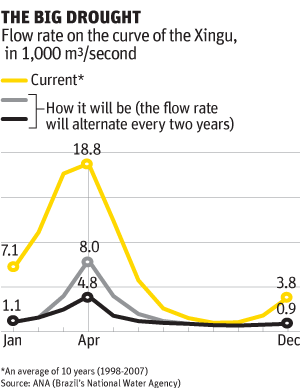
This landscape will change considerably with the closing of the floodgates at the Pimental dam. This closure will notably flatten out the peaks in the rainy and dry-seasonal hydrologic pulses of the Xingu, whose flow rate can surpass 20,000 cubic meters per second (m³/s) between December and May and then drop to 400 m³/s in August/September, in its worst years (even still, around 10 times the flow rate of the Tietê River as it flows through the city of São Paulo).
Various species of fish depend on a river’s rainy season to feed and reproduce, as they invade the inundated forests (igapós) to eat fruit and spawn in protected environments. When the turbines of Belo Monte’s main powerhouse are functioning, by 2016, the spillway of the Pimental dam will guarantee a minimum flow rate of 700 m³/s at the Big Bend during dry season, but, in the rainy season, will only reach between 4,000 m³/s and 8,000 m³/s, in alternating years, the so-called “sanitary outflow”.
A cascade of problems
The loricariidae species and their rocky, river-bed habitats, however, are far from being the only obstacle to Belo Monte’s progress. The Environmental Impact Assessment (EIA) of the dam which Ibama (the Brazilian Environmental and Renewable Natural Resources Institute (the licensing arm of the Environment Ministry) approved in 2010, comprises 35 volumes and took four years to complete.
The assessment’s name suggests an exclusive concern with the natural environment. But the study also includes the social impacts of the dam. This encompasses the lifestyle of Indians; basic sanitation in Altamira; relocating those who were living in to-be-inundated houses built on stilts; and the impact of the population explosion on cities within the dam’s sphere of influence –virtually all of the past and present plights require a solution in the EIA’s thousands of pages.
Ibama’s licensing process resulted in the Basic Environmental Project (the notorious PBA), also with a size of Amazonian proportions. There are dozens of programs, some of which will take three decades to complete, that account for more than R$ 4 billion ($1.7 billion) of the R$ 30 billion ($13 billion) that Belo Monte will cost.
A list of pre-conditions –“condicionantes”, in the social/environmental jargon invented by Ibama– to grant the dam an operational license by the end of 2014 is nine pages long. There are 40 “condicionantes” on the list, from the construction of schools and health clinics to the installation of water and sewage systems in Altamira and Vitória do Xingu; from the monitoring of water quality and fish populations to the detailed outlining of a system by which boats can detour around the Pimental dam. Never in the history of dam construction in Brazil has a project developer had to concern itself with such an ambitious and, as one would expect, problematic program to mitigate the environmental and social impacts of a hydroelectric plant.
Indians, riverbank dwellers, and Altamira residents complain of not having been adequately consulted about how the Xingu is being utilized. The federal government’s answer is to have held 142 events, including four public hearings (in Belém, Altamira, Vitória do Xingu and Brasil Novo) that have attracted 6,000 people; 30 meetings in indigenous people’s villages (1,700 participants); and 61 meetings in rural communities (2,100 attendees). The absence of adequate consultation with all the indigenous peoples is one of the alleged reasons behind two dozen lawsuits that federal prosecutors have filed against Belo Monte. The dam’s construction is on schedule, but within the social and environmental timetable, work goes slowly. Because of the delays in the consortium’s compliance with licensing conditions, Ibama, which has an eight-person team devoted to monitoring compliance, has already fined Norte Energia twice, in February of 2012 (R$ 7 million, or $3 million) and this past October (R$ 5.8 million, $2.5 million). The consortium has appealed those fines administratively, that is, within Ibama.
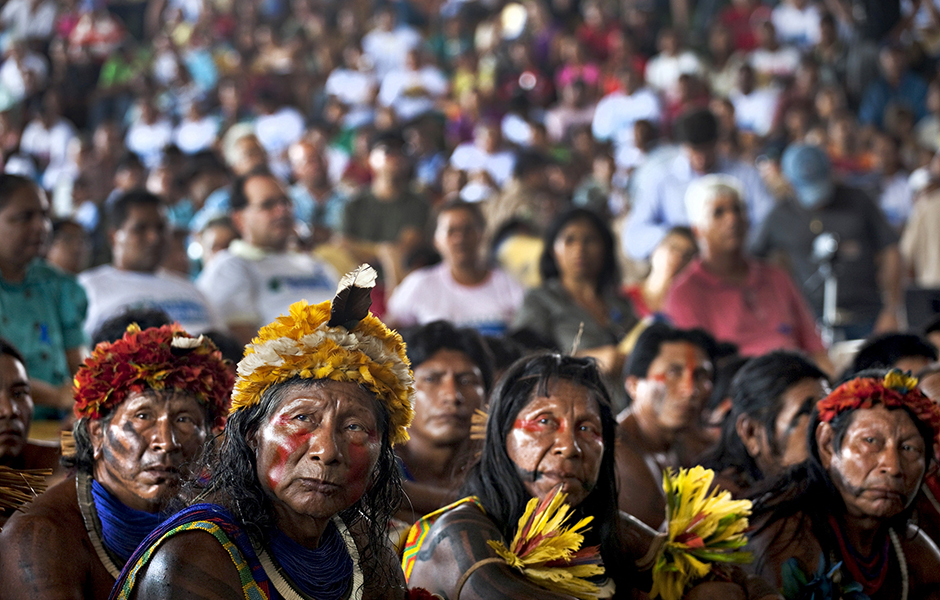
A public hearing about Belo Monte that took place in Altamira in 2009 - Lalo de Almeida/Folhapress

A public hearing about Belo Monte that took place in Altamira in 2009 - Lalo de Almeida/Folhapress
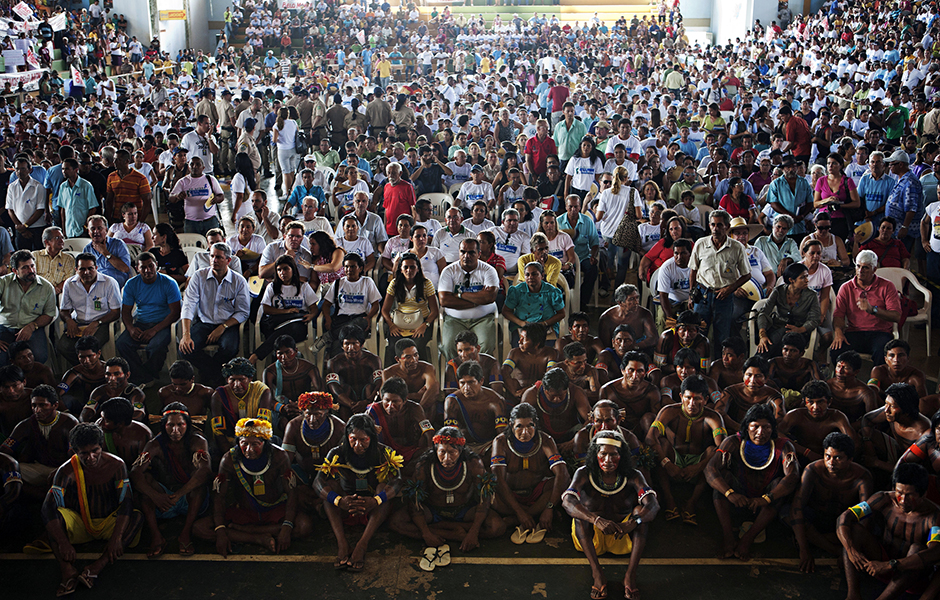
A public hearing about Belo Monte that took place in Altamira in 2009 - Lalo de Almeida/Folhapress
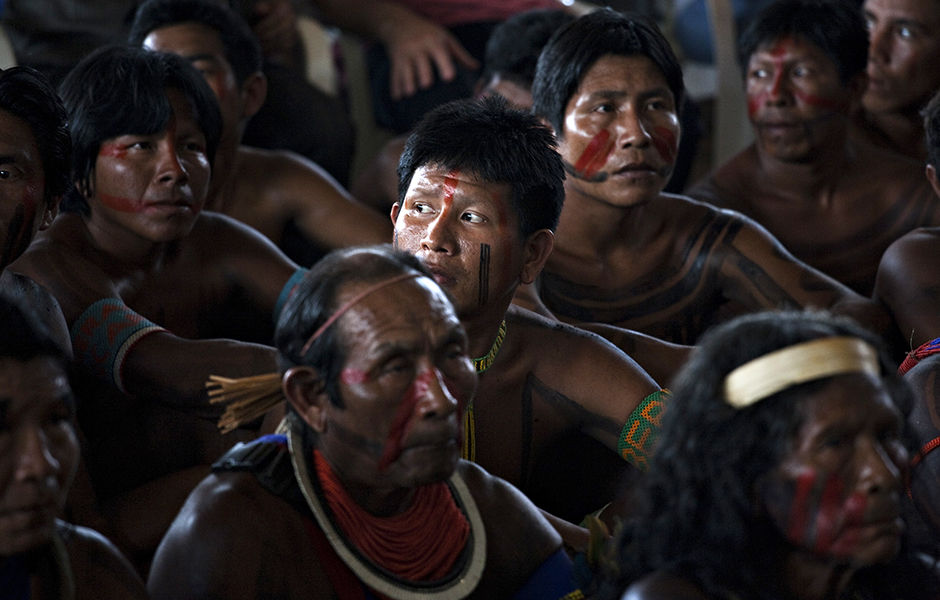
A public hearing about Belo Monte that took place in Altamira in 2009 - Lalo de Almeida/Folhapress
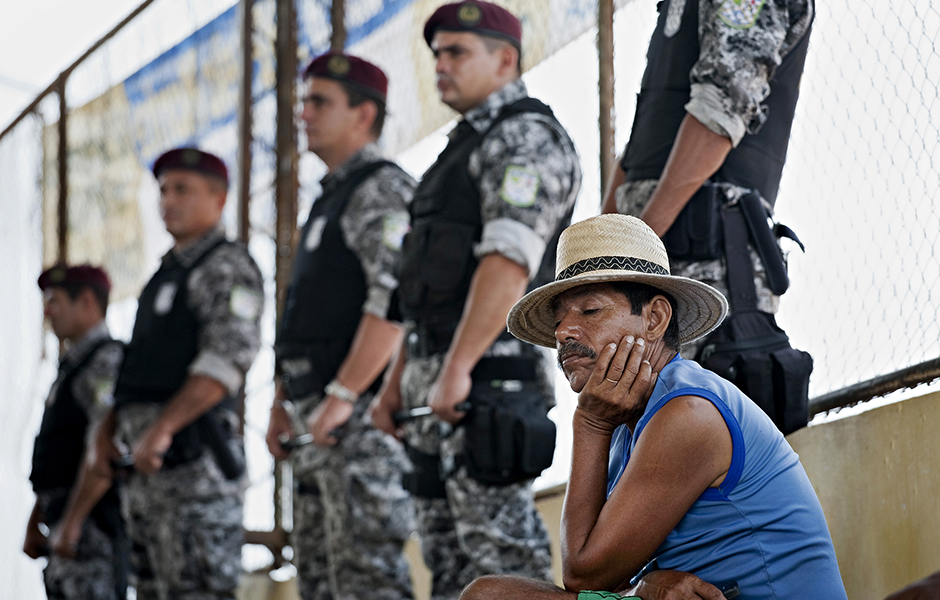
A public hearing about Belo Monte held in Vitória do Xingu in 2009 - Lalo de Almeida/Folhapress

A public hearing about Belo Monte held in Vitória do Xingu in 2009 - Lalo de Almeida/Folhapress

A public hearing about Belo Monte held in Vitória do Xingu in 2009 - Lalo de Almeida/Folhapress
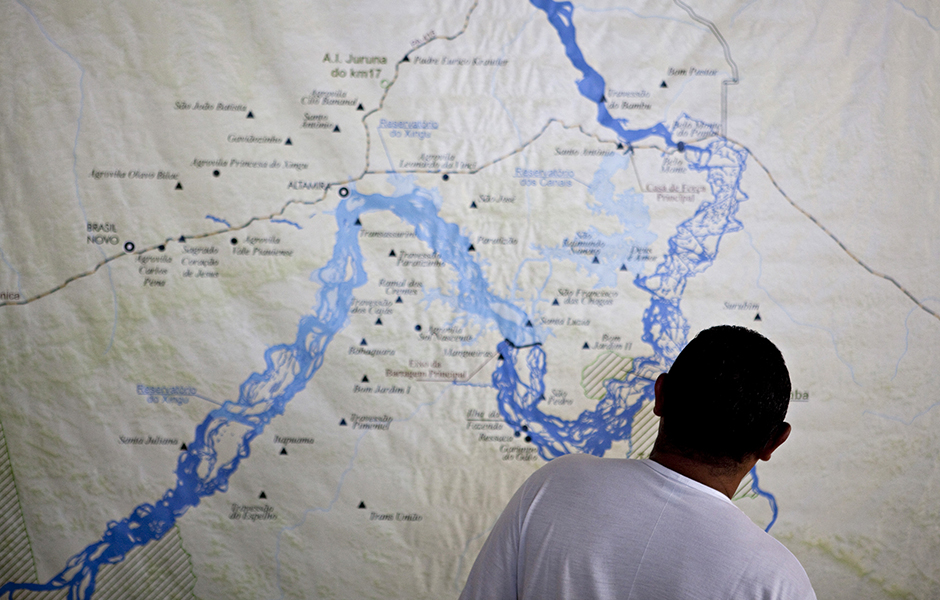
A public hearing about Belo Monte held in Vitória do Xingu in 2009 - Lalo de Almeida/Folhapress
In a July inspection report, the team affirmed that the consortium’s being behind schedule in complying with pre-conditions can delay Ibama’s granting the dam an operational license, one Norte Energia needs to request by next July. If it is not granted by December 2014, the consortium will not be able to close the floodgates at the Pimental dam and begin to generate energy at its auxiliary powerhouse in mid 2015.
No one expects Ibama’s administrators to take this step (and deny the dam an operational license). The federal government is, after all, on both sides of the counter. The Norte Energia consortium is almost completely comprised of state-owned companies and would suffer economic losses if there were a delay in the project. The BNDES, which, upon financing R$ 22.5 billion ($9.8 billion) of the undertaking and becoming a partner in it, contracted a social and environmental audit to monitor compliance with pre-conditions, but has not released its reports, alleging the need for commercial secrecy.
Within Ibama, the word is that if the consortium reaches 50% of the pre-conditional goal of installing the basic sanitation (water and sewage systems) in Altamira by mid 2014, this will be considered satisfactory. This is despite the fact that the river running through the city that receives organic waste from a population whose size has swelled by 40% will, with the closing of the Pimental dam floodgates, become a reservoir that will partially inundate it.
Wasted timber
Everyone who tours the three construction sites of the hydroelectric plant –Pimental, Canals/Dikes and Belo Monte– will occasionally run across gigantic piles of timber. There are two types of piles: discarded waste, both large and small (branches and trunks of no value to sawmills) and stockpiles of logs, some of them blackened from one or two years of being outdoors. Norte Energia claims that most of the timber is “white” wood (not dense enough for use in civil construction) or from species, like Brazil nut trees, whose processing requires Ibama authorization.
Belo Monte is not going to inundate an entirely virgin area of forest because 50% of the Big Bend region was cut for farming and ranching after the opening of the Transamazônica highway, in the 1970s. All that’s left there are patches of primary forest, mainly on islands formed by the channels of the Xingu.
Even still, the volume of timber that results from “suppressing vegetation”, the euphemism preferred by Ibama, is enough to affect the regional wood market. Within the 130 km² of the reservoir between the Pimental dam and the main powerhouse, a back-of-the-envelope calculation indicates that 3 million trees are bound to be cut.
Mega-projects like Belo Monte consume a lot of wood used to build the reinforced-concrete structures of the powerhouses and spillways. Ibama put pressure on Norte Energia and the Belo Monte Construction Consortium (CCBM) to preferably use wood that they cut. Only in mid-2013 two sawmills began to be commissioned at the construction sites, each with the capacity to process 80 m³ of logs per day. In their absence, until December 2012, 17,700 m³ of timber had been bought by the companies on the market, even though they should, in fact, be selling it.
For Juan Doblas, a geo-processing specialist from the Social-Environmental Institute (ISA), in Altamira, this extraordinary demand can help encourage, instead of restrict, the illegal market for wood in the region. While Norte Energia claims that it can prove the legal origin of the wood, Doblas believes in the possibility that at least part of it is being secretly cut on federally-protected Indian lands –like Cachoeira Seca, a reservation of the Arara people– and “legalized” by managed-forestry authorizations in areas distant from those lands.
A report from Imazon, a research NGO, released last month, showed that from 2011 to 2012, the non-authorized cutting of wood increased by 151% in Pará state. One-third of the area in which clandestine extraction occurred centered on the towns of Trairão and Uruará, the latter being a municipality within Belo Monte’s sphere of influence. Pará state accounted for most of the Amazon’s deforestation during the 2012-2013 period, with 2,379 km² clear-cut (41% of the total amount of deforestation in Brazil).
Timber from an area deforested to make place for Belo Monte’s construction worksImage by Lalo de Almeida/Folhapress
A baby monkey rescued by Belo Monte’s rangersImage by Lalo de Almeida/Folhapress
Fish and chips
Engineer Antônio Neto, 54, is responsible for environmental management at Norte Energia. Under his command, at least 55 Basic Environmental Project (PBA) actions that encompass the physical (surface and underground water, erosion) and the biotic environment (living things). Eight areas, measuring 5,000 m², were demarcated to study impacted habitats. Every six months for six years, the population of birds, insects, mammals, among them sloths, monkeys, tapirs, capybaras (the world’s largest rodents), river otters (including a species of giant ones), and weasels, as well as flora (the growth of trees, seeds and flowers) will be monitored.
The monitoring of fish will be done via biotelemetry, chips implanted in fish to study their migration patterns on a 800-km stretch of river to the municipality of Senador José Porfírio, downriver from the main powerhouse, and to register how many and which of four types of chip-implanted species –surubim, pirarara, pacu-de-seringa and curimbatá– reach that destination.
Besides this, Norte Energia has set up a lab at the Federal University of Pará (UFPA) in Altamira to study the behavior, feeding and reproductive habits of the ornamental fish acari-zebra. The plan is to develop a technology for reproducing it in captivity (what they do in Germany) as a way of restoring the income of fishermen.
Neto says that he has no idea of how the drop in the average, rainy-season flow rate of the peaks (in hydrologic pulses) to between 4,000 m³/s and 8,000 m³/s, in alternating years will affect fish or which species depend on rainy-season pulses. “Anyone who says that they know what will happen is lying”, he said. In other words, Belo Monte is one big experiment with the fauna and flora of the Big Bend –not to speak of the human local populations who rely on the river for food or recreation and the myriad of doubts about the energy efficiency and the economics of the hydroelectric plant.
Risky experiment
The risk that this experiment in the unique environment of the 100-km curve in the river could go awry increases with a basic drawback in science: the lack of control over variables.
On the right bank of the Xingu, around 10 km from the Pimental dam and a similar distance from the Paquiçamba Indigenous Reserve, another project with considerable social-environmental impacts will soon get underway –Belo Sun, the biggest gold mining project in Brazil. The open-pit mining venture, backed by Canadian capital, plans to process 94 million metric tons of gold-laden ore near the Big Bend, beginning in 2016 and extract from it 142 metric tons of pure gold in the next 13 years. By comparison, freelance Amazon gold diggers at the Serra Pelada open-pit mine extracted an estimated 100 metric tons of gold during the decade they worked it.
Despite the Belo Sun project’s being within the direct sphere of influence of Belo Monte, the dam’s environmental impact study doesn’t take the mine into account. Besides, the licensing processes remain under the control of two different agencies: Ibama, a federal one, in the case of the dam, and the Pará State Environment Secretariat, in the case of the mine. The environmental impact study of the mining could not have taken all the dam’s impacts into consideration simply because nobody knows for sure what they will be. Mines generate mounds of mineral debris, normally stored in lagoon-like reservoirs that can rupture during heavy rains.

The team that did the Belo Sun study lacked anthropologists, despite the proximity of indigenous lands. Public prosecutors and non-governmental organizations have already asked the courts to suspend the licensing of the mining venture because Indian communities haven’t been consulted and because Ibama, a federal agency, and not a state agency, should license the project, given the mine’s impact on them. Another flurry of lawsuits is expected to be filed against Belo Sun. Nevertheless, the Pará State Environmental Council approved the mine’s preliminary license the first week of December.
For the federal and Pará state governments, along with the mayors’ offices of the region, what counts is the influx of billions of dollars in investments and the creation of thousands of jobs (albeit temporary ones), and the feeling of progress that has galvanized the region. For the electoral propaganda shown on TV, the images of a lab that reproduces acaris-zebra or of an Altamira free of vultures following the cleanup of dumpsites are worth more than the imponderable future of the rocky, riverbed habitats of the Xingu.

